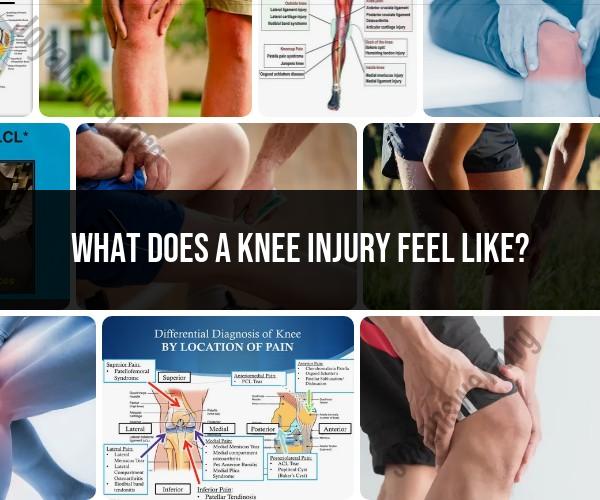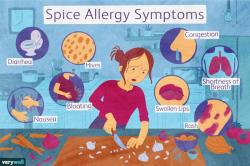What does a knee injury feel like?
A knee injury can manifest with various symptoms depending on the type and severity of the injury. Common sensations and feelings associated with knee injuries include:
Pain: Pain is often the most noticeable symptom of a knee injury. The severity and location of the pain can vary. It may be sharp, stabbing, dull, or throbbing, and it might be concentrated in one specific area of the knee or more widespread.
Swelling: Swelling around the knee joint is a typical response to injury. It occurs because of increased fluid and inflammation in the affected area. Swelling can make the knee feel tight, puffy, or warm to the touch.
Stiffness: Knee injuries often lead to stiffness in the joint, making it difficult to fully bend or straighten the knee. You may feel like your knee is "locked" or restricted in its range of motion.
Instability: Some knee injuries can result in a feeling of instability or a sense that the knee is giving way. This instability can make it challenging to stand or walk without discomfort or fear of falling.
Popping or Clicking: A knee injury may be accompanied by unusual sounds, such as popping or clicking, when you move the joint. These sounds can indicate damage to the knee's structures.
Bruising: Injuries to the knee can cause bruising (discoloration) around the affected area. The severity of bruising can vary depending on the extent of the injury.
Tenderness: The knee may be tender to the touch, and applying pressure or touching specific areas may worsen the pain.
Difficulty Bearing Weight: In some cases, a knee injury can make it painful or nearly impossible to put weight on the affected leg.
Numbness or Tingling: In more severe injuries or cases involving nerve damage, you may experience numbness, tingling, or a "pins and needles" sensation in the knee or lower leg.
Heat: The injured knee may feel warm or hot to the touch due to inflammation.
It's important to note that the specific symptoms you experience can vary widely depending on the type of knee injury. Common knee injuries include ligament sprains or tears (such as an ACL tear), meniscus tears, patellar dislocations, bursitis, tendonitis, and fractures.
If you suspect a knee injury, it's essential to seek medical attention promptly. A healthcare professional can assess the injury, provide a proper diagnosis, and recommend appropriate treatment, which may include rest, ice, compression, elevation (RICE protocol), physical therapy, bracing, or in some cases, surgical intervention. Ignoring a knee injury or attempting to "tough it out" can lead to further damage and complications, so it's crucial to address it promptly.
The Painful Reality: What Does a Knee Injury Feel Like?
Knee injuries can range from mild to severe, and the pain can vary depending on the severity of the injury. Some common symptoms of knee injuries include:
- Pain: This is the most common symptom of a knee injury. The pain can be sharp, dull, or throbbing. It may be worse when you move your knee or put weight on it.
- Swelling: Swelling is another common symptom of a knee injury. It can occur immediately after the injury or develop over time.
- Bruising: Bruising around the knee can also be a sign of an injury.
- Limited range of motion: You may have difficulty bending or straightening your knee.
- Weakness: Your knee may feel weak and unstable.
If you experience any of these symptoms, it is important to see a doctor to determine the severity of your injury and get the appropriate treatment.
Recognizing the Signs and Symptoms of a Knee Injury
In addition to the common symptoms listed above, there are some other signs and symptoms of a knee injury that you should be aware of:
- Locking or catching: If your knee locks or catches when you move it, this could be a sign of a serious injury, such as a torn ligament or meniscus.
- Instability: If your knee feels unstable and you are afraid of it giving out, this could be a sign of a serious injury, such as a torn ligament or meniscus.
- An audible pop: If you hear a pop when you injure your knee, this could be a sign of a serious injury, such as a torn ligament or meniscus.
If you experience any of these symptoms, it is important to see a doctor to determine the severity of your injury and get the appropriate treatment.
Seeking Relief: Treatment Options for Knee Injuries
The treatment for a knee injury will vary depending on the severity of the injury. Mild injuries may heal with rest, ice, compression, and elevation (RICE). More serious injuries may require physical therapy, surgery, or other treatments.
Here are some of the treatment options that may be available for knee injuries:
- Rest: Rest is important for allowing the knee to heal. You may need to avoid activities that put stress on your knee for a period of time.
- Ice: Ice can help to reduce inflammation and pain. You can apply ice to your knee for 20 minutes at a time, several times a day.
- Compression: Compression can help to reduce swelling. You can use an elastic bandage or compression sleeve to wrap your knee.
- Elevation: Elevation can also help to reduce swelling. You can elevate your knee by resting it on a pillow when you are sitting or lying down.
- Physical therapy: Physical therapy can help to strengthen the muscles around the knee and improve range of motion.
- Surgery: Surgery may be necessary for more serious knee injuries, such as torn ligaments or meniscus.
If you have a knee injury, it is important to see a doctor to determine the best course of treatment for you.













